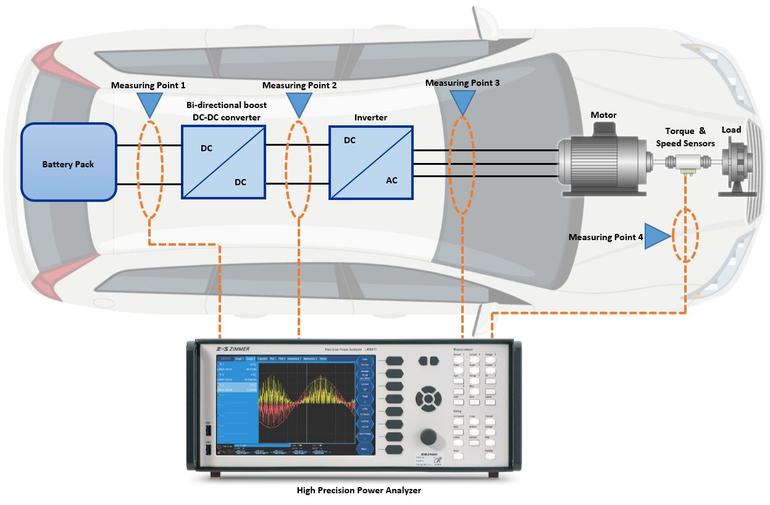Flawless Power Measurements for E-Mobility
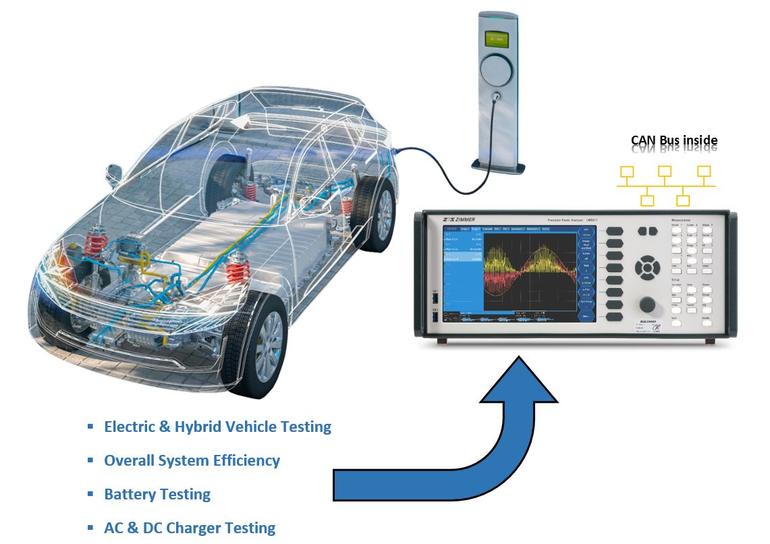
Reliable and accurate power measurement technology is a keystone of e-mobility technological advancements
Introduction
Recently, electromobility has seen accelerated adoption in virtually all industrialized countries. The use of electric vehicles (EVs) has been viewed by many as a way to remarkably reduce oil dependence, operate vehicles more efficiently, and reduce carbon emissions. It is predicted that by 2040 the number of electric vehicles on the road will reach 500 million. This expected growth of the EV market poses many challenges for the R&D and test engineers, who are called to overcome them. In particular, today’s high demands on the efficiency and performance of the electric vehicle powertrains and DC&AC chargers create extremely tough requirements for the measuring equipment. An old saying is very applicable here: “If you cannot measure it, you cannot control it”. This is where the strengths of ZES Zimmer Electronic Systems GmbH take full effect, providing precise power measurements to satisfy every application and need.
Powertrain efficiency
The measurement of the system’s overall efficiency is required for optimization. Thus, the ratio of the mechanical output power to electrical input power shall be measured to determine the efficiency map. The power analyzers from ZES Zimmer are equipped with up to 7 power channels, enabling thus not only the overall system efficiency measurement but also the efficiency measurement of the individual components such as the inverter, motor and the DC-DC converter. In Figure 1, a wiring schematic is illustrated where the battery feeds a bi-directional boost DC-DC converter. Then, the DC-DC converter is connected to the inverter, which drives the electric motor. All 6-power channels and the process signal interface (PSI), which is used for the torque and speed sensors’ outputs, can perfectly be utilized simultaneously using the LMG600 series power analyzer.
Figure 1: Evaluating the efficiency of a motor drive system
High accuracy measurements are a critical precondition of evaluating the efficiency of any powertrain. If the measurements of the input and output power of the inverter contain an error component, it will massively affect the efficiency and loss values. For example, an error of 0.1% in the input power of the inverter with 99% efficiency will result in an error of 10% for the loss.
The output signal of the inverter contains the torque relevant fundamental frequency of the motor plus the inverter’s switching frequency, its harmonics, and other by-products. In order to allow accurate measurements on the inverter’s output power, it is an imperative need to make use of a power analyzer equipped with high bandwidth and a parallel measuring ability in two bandwidths simultaneously. The LMG600 series can achieve this using the dualPath technology. The analog signal conditioning stays unchanged, but the following processing has been revolutionized: Each single voltage and current channel of the LMG600 contains two analog-digital converters (ADC). One for the wide bandwidth signal without filtering, and one for the narrow bandwidth signal with proper anti-aliasing filter. The sampling values of both ADCs are digitally processed in parallel. With this novel DualPath approach, the user has access to narrow and wide bandwidth values simultaneously without the risk of aliasing.
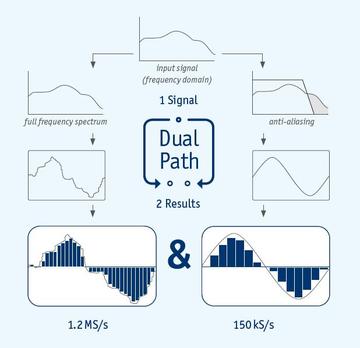
Figure 2: DualPath technology explained
Battery Test Charge and Discharge
Hybrid and electric vehicles have a high voltage battery pack that comprises of individual modules and cells organized in series and parallel. Determining the basic electrical characteristics of a battery during charging and discharging mode is crucial. The LMG600 allows the implementation of a customized, versatile and powerful battery tester, providing everything necessary for detailed and accurate energy balance measurements, from charge to discharge. With an easy to use and customize GUI along with an intelligent Script Editor, important measurements of the battery characteristics such as voltage, current, energy capacity (Wh) and coulometric capacity (Ah), as well as internal resistance and Joule energy dissipation can be displayed in a single screen.
AC & DC Charging Tests
The expected growth of the EV market has to be accompanied by the development of an appropriate charging infrastructure. The grid AC power always needs to be converted to DC when charging an electric vehicle. If the power is converted before it enters the vehicle, DC charging is deployed. Conversely, with AC chargers the power gets converted inside the vehicle. Overall, DC charging allows for much faster charging compared to AC, and it is the preferred method for EV recharging, especially for long distance trips.
The ability of the LMG600 series to perform up to 7 power input measurements simultaneously makes it possible to test and evaluate the power measurements and efficiency of all different converter topologies, which are accommodated within any EV charger. A practical implementation is illustrated in Figure 3. It is, after all, our concern to facilitate the design and testing of EV chargers by enabling the access to all-important measurements efficiently and most importantly without any compromises.
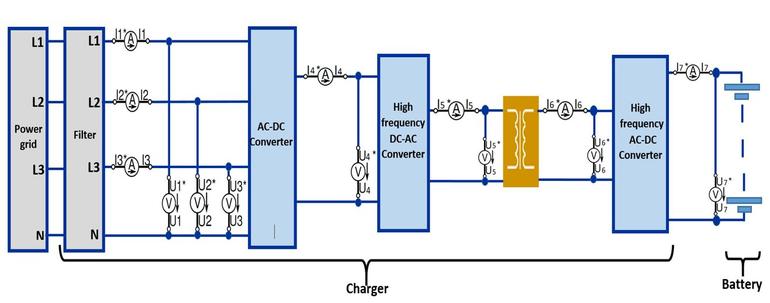
Figure 3: Logical connection of the DC charging system
Finally, the LMG600 offers a convenient way to customize screens according to the demands of the application to help focus on particular results. The measurement results can be made more meaningful by adding a descriptive title and illustrating the numerical results with a schematic depiction of the setup and other graphical elements. For EV charging applications all resulting efficiencies between various inputs and outputs can be displayed in an easy and straightforward manner (Fig 4).
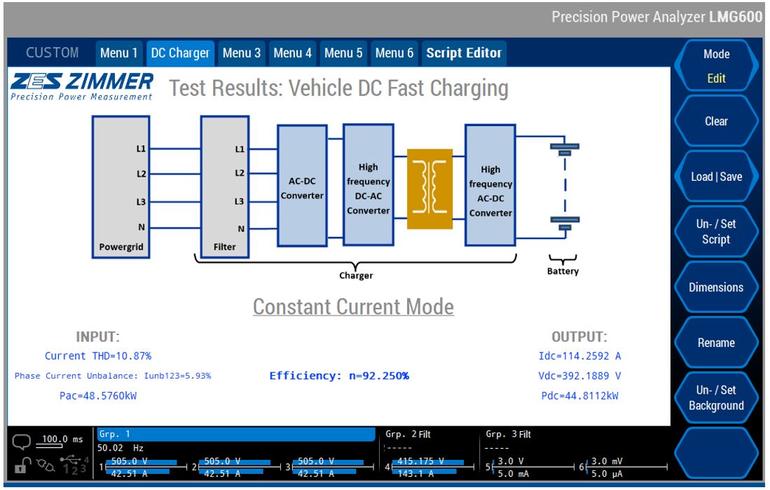
Figure 4: Fully customized menu
Powerful Interfaces
In the context of test benches, the power analyzer must often share its measurements with other existing computer and software environments. Smart interfaces shall ensure the uninterrupted data exchange, remote control and even automation of test procedure.
E-mobility applications demand high sampling rate, which in turn creates a large amount of data. Powerful Gigabit Ethernet LAN interface can be used to avoid any bottlenecks for the exchange of data. It is important to note here, that modern power analyzers shall offer remote control operation capabilities in an automated test setup.
In the automotive industry CAN Bus systems are standard, providing communication between various Electronic Control Units (ECU) for the management of a large number of vehicular functions.
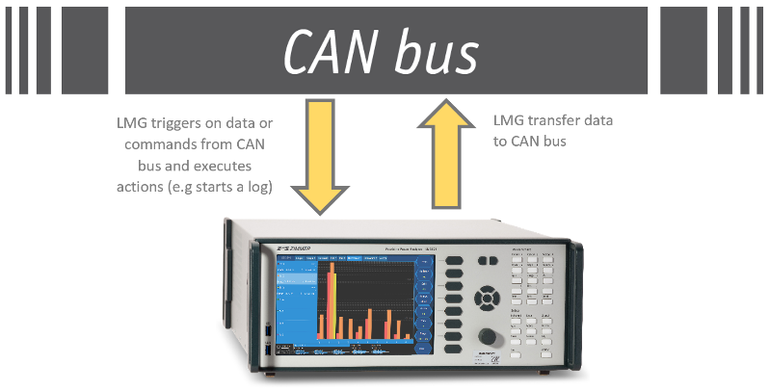
Figure 5: CAN bus bi-directional data transmission
In matters of power measurement, how can these measuring devices be integrated into the vehicles CAN network? The LMG600 series is equipped with a CAN bus interface, which enables the data communication in accordance with ISO 11898-2 High-speed CAN-Bus. The CAN bus interface supports bi-directional data transmission and trigger configuration on 256 in total slots.
It is often necessary to take further measurements in addition to electrical parameters to be able to make a meaningful overall statement on the performance and efficiency of the device being tested. Hence, it is vital to be able to perfectly synchronize these measured values with the RMS values, in order to establish reliable timing between electrical and mechanical events. A typical application is the analysis of electrical drive systems, where torque and speed must be measured and reconciled with the electrical parameters. Furthermore, it may also be necessary for the power analyzer to output results as analogue signals for further processing, or to trigger switching operations depending on measured variables or derived values. The LMG600 series was engineered with the above requirements in mind offering a multitude of different input/output features for analogue and digital signals via the Process Signal Interface (PSI).
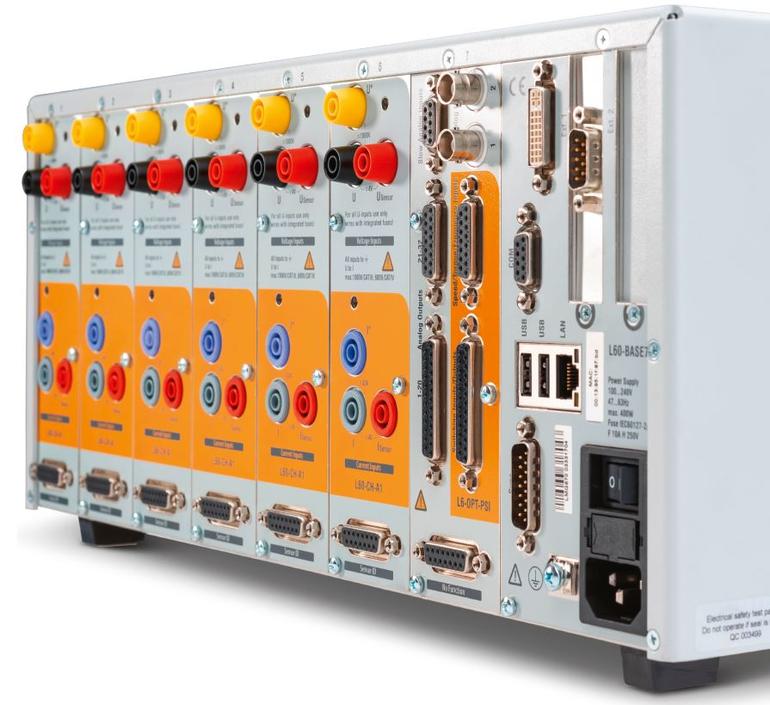
Figure 6: Process Signal Interface (PSI)

